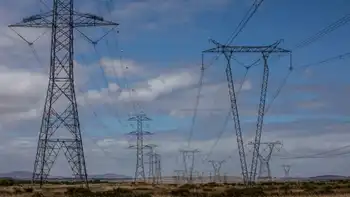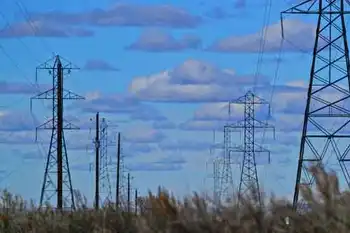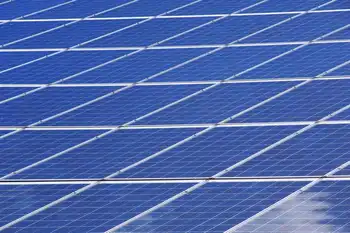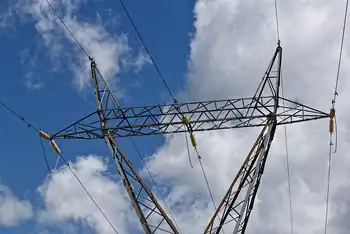Tennessee success in solar a start of supply chain
It's a sign of the trickle-down effect economic developers across the state are hoping for as Hemlock and Cleveland-bound Wacker Chemie AG - both world leaders in manufacturing polysilicon, the raw material of solar cells - put down roots in Tennessee.
Like the auto industry before it, these billion-dollar investments offer promise of a widespread boon to the state, should the firms attract peripheral companies in the photovoltaic industry.
However, an opportunity does not a given make.
Tennessee is competing both with states that present more attractive markets for solar products, as well as an industry already well-entrenched overseas.
While many are likening the state's solar boom to Tennessee's first automaker announcement a couple of decades ago, key differences exist between the two industries.
Large plants like those planned by Wacker and Hemlock start the solar food chain rather than complete it, therefore they don't automatically bring with them a host of suppliers, says Terry Strange, plant manager for Hemlock Semiconductor in Clarksville.
“It is pretty close to being opposite of what you have with the car manufacturers,” he says.
Building a solar panel, the product that comprises the bulk of the industry, begins with the creation of polysilicon, a semiconducting material also used to make cell phone and computer chips. That material is then sliced into wafers, which are treated to free up their electrons. The wafers are connected to wires to make solar cells, which are strung together with wiring, sandwiched by glass panels and, voila, the photovoltaic module is born.
That very basic description comes courtesy of Rhone Resch, president and CEO of the Solar Energy Industries Association, a national trade group for the solar industry.
Some companies, such as Sharp Electronics, buy the polysilicon from a company like Wacker or Hemlock, process it - in Sharp's case the material is sent to Japan to be made into solar cells - and make the panels. Sharp's solar panels are assembled in Memphis. As the industry develops, it's also becoming more fragmented, Resch says, with companies specializing in one or another component of the process.
“There's two business models within the solar space, one in which a company is integrated… where they will handle all the various aspects of manufacturing,” Resch says. “And then what we've seen, and I think what we're going to continue to see, is greater specialization.”
One example is Confluence Solar, a St. Louis-based startup specializing in monocrystalline technology, one of two processes used to make wafers for solar cells.
The company, according to news reports, is considering Tennessee as a possible location for its manufacturing facility. Late last year, the Clinton City Council approved selling land to an unnamed solar manufacturer considering setting up a $400 million, 500-employee manufacturing facility. The company has not yet announced a decision on the site and a Confluence spokeswoman would not comment on the process.
How many such firms the state will land remains to be seen.
The United States is not yet a hot spot for solar in global terms, Resch says. In spite of federal stimulus dollars targeted toward renewable energy development, incentives remain largely a patchwork among states - and Tennessee is not leading the pack, he says.
European countries offer incentive programs for distributed generation of solar power, and Asian countries, such as Malaysia, offer perks such as a 20-year tax holiday.
“The U.S. federal government offers no federal incentives,” Resch says, although a potential renewable energy portfolio requirement in energy legislation passed by both the House and Senate looks promising.
Tennessee may be a good place to set up manufacturing operations thanks to good interstate access, cheap and consistent power, available labor, etc. Polysilicon manufacturers ship product all over the world, but other companies will also take into consideration the local market's potential for solar, he says.
Ranking Tennessee in the “top 10” states for solar economies, Resch says that Tennessee doesn't merit top billing because “there's no natural market that's developing” for solar.
“You've really got to export most of your products outside the state,” he says. “It's critical if Tennessee wants to see more jobs that they create a market within their own state.
“For example, the No. 1 state (for solar) in the country is California. The no. 2 state is New Jersey,” both in terms of market and solar-related jobs, he says. Those jobs come both from business coming into the state and from companies serving New Jersey's residential and business customers adopting solar thanks to state incentives.
In the meantime, changes in overseas markets are beginning to drive investors to at least window shop in the state.
In early January, a European investor looking to set up large solar installations toured Tennessee, meeting with state officials in Nashville as well as local business leaders in Knoxville.
Spain, which through aggressive national incentives created the world's No. 1 solar market has since backed off the program, leading companies to seek greener pastures. Germany is also reducing the amount it pays for solar-generated power.
Companies from Europe and elsewhere are “looking at this country as an opportunity,” says Stephen Levy, executive director of the Tennessee Solar Energy Association, which recently was chartered in Knoxville. The group helped coordinate the local meeting with the European investors.
For now, conversation is virtually all that's come of the two polysilicon manufacturers' decision to site plants in Tennessee.
Still, says Strange, “I would say it's positive that they're even thinking about it and asking about it.”
Related News
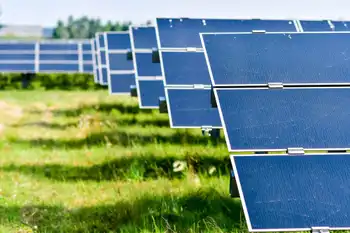
'That can keep you up at night': Lessons for Canada from Europe's power crisis
TORONTO - Europe is currently suffering the consequences of an uncoordinated rush to carbon-free electricity that experts warn could hit Canada as well unless urgent action is taken.
Power prices in Germany, for example, hit a record 91 euros ($135 CAD) per megawatt-hour earlier this month. That is more than triple what electricity costs in Ontario, even during periods of peak demand.
Experts blame the price spikes in large part on a chaotic transition to a specific set of renewable electricity sources - wind and solar - at the expense of other carbon-free supplies such as nuclear power. Germany, Europe’s largest economy,…


